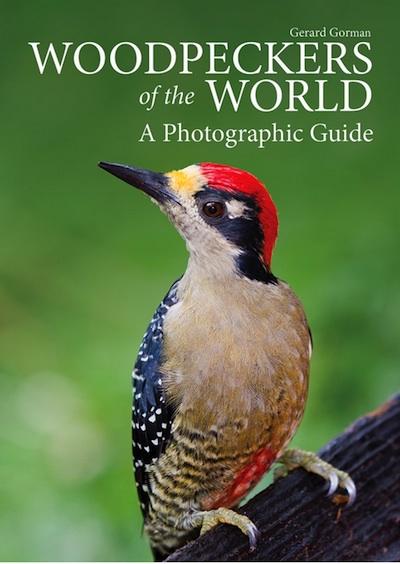
It's not much of a secret among my birding companions that I am quite fond of woodpeckers. From their unique physiology allowing them to safely bang their head into wood for hours on end to the common theme of stark black, white, and red coloration, woodpeckers are fantastic birds.
One of my lifetime birding goals is to see every woodpecker in the world. That's 239 species. It's extremely unlikely I'll ever be able to achieve that goal. So far, I've tallied a meager 15 species. Even with unlimited money, the other 224 would require many years of dedicated travel.
Gerard Gorman, one of the world's foremost woodpecker experts, hasn't even seen every one of them. Still, with the help of some hours in museums examining specimens and the expertise of some other woodpecker aficionados, he's written the definitive photographic identification guide for the Picidae family.
Woodpeckers of the World: A Photographic Guide is the latest family-specific identification guide to hit the market. Stunning photographs of every species fill the 500+ pages of Gorman's book. He provides identification tips for each species, including descriptions of vocalizations and drumming. Detailed range maps and habitat descriptions also accompany the species accounts.
A taxonomy heading for every entry highlights different races or subspecies. This begins to delve into the depths of woodpecker identification, something a regional field guide is not equipped to do. Constrained by space limitations, Woodpeckers of the World can't illustrate every subspecies, but the mention of the races and their geographic tendencies is enough of a starting point to steer the observer toward more in-depth materials.
My favorite part of any detailed bird guide is the natural history and ecology. These topics are never covered in enough depth to satisfy me, but I do keep in mind that an identification guide is not necessarily a natural history guide. Gorman includes information about diet and feeding behavior for each species, as well as nesting habits on the introduction page for each genus. Space doesn't allow for a more detailed treatment of the species, although thirty pages at the beginning of the book are dedicated to various aspects of woodpecker physiology and ecology.
Woodpeckers are often considered 'keystone species,' meaning that their role in the ecosystem is outsized. Cavities created by woodpeckers are used by other birds, mammals, reptiles, amphibians, and invertebrates. A lack of cavities in a forest caused by a dearth of woodpeckers can have a serious detrimental effect to the entire ecosystem. Woodpeckers are also recognized as being crucial components of pest control in many areas. Boring beetles that can decimate tree populations are among the primary food of some species of woodpecker. In the eastern United States, a dramatic increase in populations of Downy, Hairy, and Red-bellied Woodpeckers coincides with the invasion of the Emerald Ash-borer. While unlikely to halt the spread of the devastating ash predator, the woodpeckers have been shown to eat as much as 85 percent of the beetles infesting each tree.
There's no reason not to love woodpeckers, and if you love them, there's no excuse for not owning Woodpeckers of the World.



Add comment